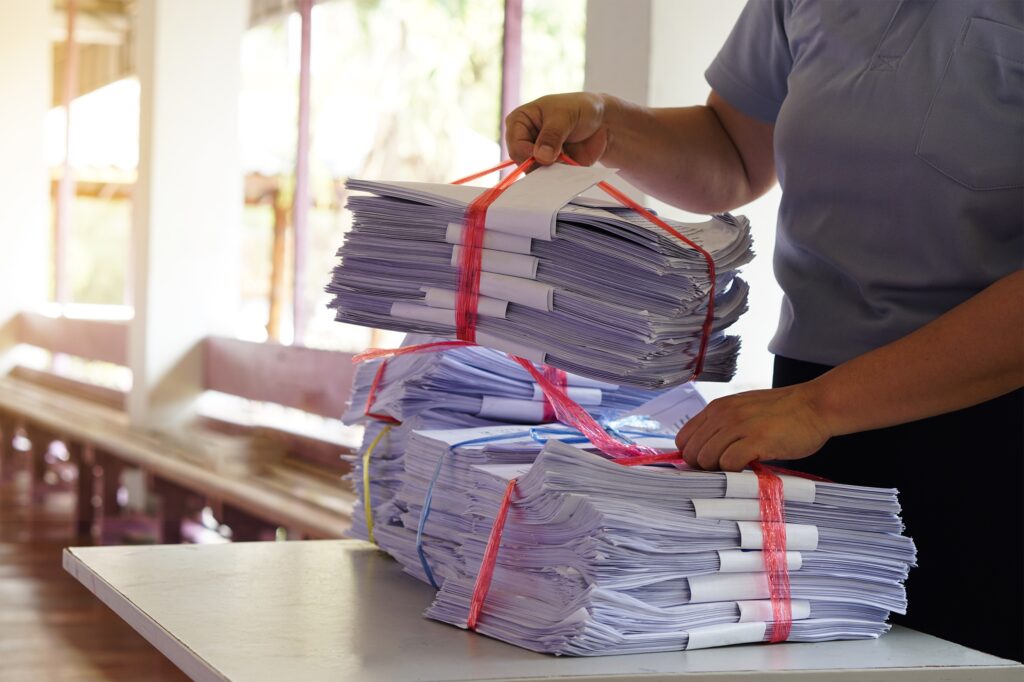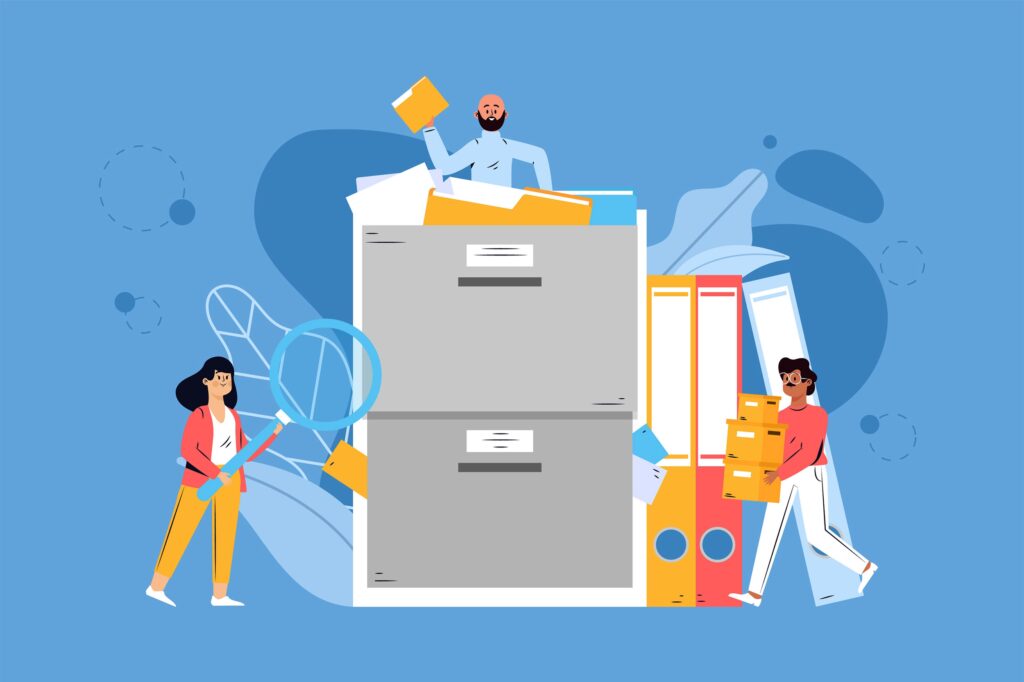
Shredding your business documents is a critical step in protecting sensitive information, but have you ever wondered what happens after the paper is shredded?
From secure transport to final recycling, understanding the chain of custody ensures your documents are handled with integrity every step of the way. It’s not just about shredding, it’s about verifying the process, reducing risk, and proving compliance.
In this post, we’ll walk you through exactly what happens after your documents are shredded, why it matters, and how a trusted provider safeguards your business throughout the entire chain of custody.
1. What Is the Chain of Custody in Document Destruction?
The chain of custody refers to the documented, secure path your documents take from the moment they leave your hands until their final destruction and disposal. It is essential for:
- Compliance with regulations like HIPAA, GLBA, and FACTA
- Audit readiness
- Preventing unauthorized access
- Maintaining data privacy
Each step, from collection to shredding to disposal, should be tracked, monitored, and verifiable.
2. Step-by-Step Breakdown: What Happens After You Shred
Let’s break down the secure shredding process from pickup to final recycling.
Step 1: Locked Bin Collection
Your provider places locked shred bins or consoles in your office. When full, they’re picked up by vetted personnel.
- Bins are never opened on-site unless agreed upon for mobile shredding.
- Drivers are background-checked and trained in secure handling.
Step 2: Secure Transportation
Collected bins are transported to a secure shredding facility.
- Stops are minimized to prevent unnecessary exposure.
- Routes and handoffs are monitored and logged.
Step 3: Industrial Shredding or Pulverization
At the facility, documents are destroyed using industrial-grade shredders that meet or exceed legal standards.
- Cross-cut or micro-cut shredding ensures irreversible destruction.
- Video monitoring and limited access prevent tampering.
Step 4: Certificate of Destruction (COD) Issued
After destruction, your provider issues a Certificate of Destruction.
This document includes:
- Date and time of destruction
- Volume or weight of materials destroyed
- Chain of custody record
- Facility and technician identification
This certificate is your proof of compliance.
Step 5: Recycling of Shredded Material
Shredded paper is baled and sent to a paper mill for eco-friendly recycling (usually into paper towels, tissue, or cardboard).
- Materials are never resold or reused in a way that could compromise privacy.
- This reduces your environmental impact while ensuring secure disposal.
3. Why Chain of Custody Matters for Compliance and Security
Failing to prove secure destruction can lead to:
- HIPAA or FACTA violations
- Fines or penalties during audits
- Data breaches or litigation
- Loss of trust with clients or partners
A documented chain of custody protects your business by showing you took every precaution.
4. Common Mistakes to Avoid
Even businesses with good intentions can fall into traps, such as:
- No formal documentation: If you can’t prove destruction, it didn’t happen (legally speaking).
- Using unvetted vendors: Not all shredding providers meet regulatory standards.
- Ignoring post-shred procedures: Destruction is just one part of the process.
Always ask for documentation and confirm your provider’s process includes secure recycling and tracking.
5. What to Look for in a Compliant Shredding Provider
When evaluating vendors, ask the following:
- Are drivers background-checked and trained?
- Are bins and vehicles locked at all times?
- Is facility surveillance in place?
- Do you receive a Certificate of Destruction every time?
- Is the shredded paper securely recycled?
- Is the provider NAID AAA Certified?
These safeguards ensure your documents are handled securely from start to finish.
Shredding is just the beginning. Ensuring your documents are handled securely after they leave your building is just as important as the shredding itself.
By working with a certified shredding provider that maintains a clear, documented chain of custody, you protect your company, your clients, and your reputation.



